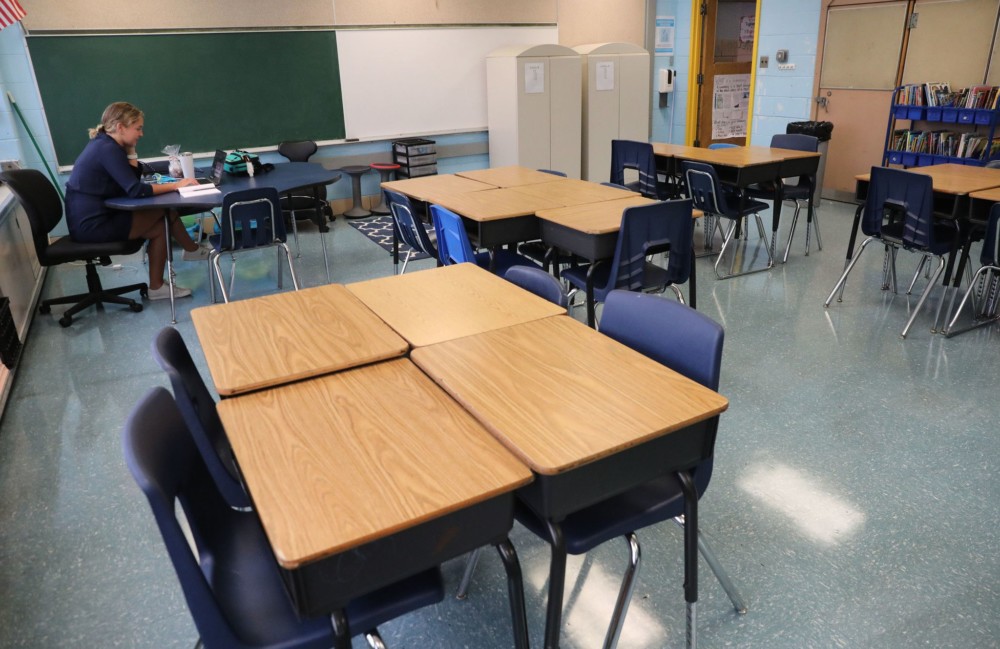Heidi Stevens
Chicago Tribune
WWR Article Summary (tl;dr) Heidi Stevens takes a look at some of the troubling realities that students and teachers face when they return to the classroom.
Chicago
One of the loudest arguments for sending kids back inside their classrooms despite a raging pandemic is the toll that e-learning is taking on their mental health.
Remote learning is lonely. It is fraught with technical glitches that leave kids feeling powerless and overwhelmed. It strips the school experience of the spontaneity and laughter and lessons and friendships that spring up in hallways and classrooms and lunchrooms and playgrounds.
It removes face-to-face interactions with a whole layer of grown-ups who, if we’re lucky, help our kids feel believed in, invested in, protected, admired, challenged in all the best ways.
Clubs aren’t the same online. Group projects aren’t the same online. Band practice isn’t the same online. Social cues aren’t the same online. The benefits of sitting and learning with and from people who don’t look like you or live like you or worship like you or believe exactly what you do are diminished, at least a little bit, online.
And these new challenges arrived when young people in America were already struggling mightily with their mental health. Suicides among U.S. teens and young adults had ballooned to the highest rates on record by 2017.
Early data shows living through a pandemic has increased depression, anxiety and other mental health challenges for people of all ages, particularly in Black and Latino communities, where the coronavirus has disproportionately sickened and killed people.
We should absolutely be prioritizing mental health in our discussions and decisions around COVID-19.
It’s important to remember, though: Kids returning to classrooms while the coronavirus rages are swapping one imperfect solution for another. They’re not walking back into their pre-pandemic school lives.
Teachers, in many cases, are tasked with teaching remote and in-person students simultaneously. Plexiglass and distancing measures necessarily preclude the physical closeness kids used to enjoy with their peers and teachers.
Gone, in many school plans, are crowded, bustling lunch tables. Students have to sit at a cafeteria table alone or eat at their classroom desks. Gone also, in many school plans, are recess and team sports and music classes that encourage singing with abandon.
buy clomid generic buy clomid online no prescription
Present are the frequent reminders, some delivered with understandable panic, to fix your mask. Present is the fear of contracting a potentially fatal virus and bringing it home to your family. Or contracting a potentially fatal virus outside of school and passing it to your friends or your teacher or the security guard you used to high-five in the hall.
Those fears are real. That anxiety is real.
This may be why, in part, just 37% of Chicago Public Schools families plan to send their kids back when school buildings begin to open Monday.
Fear and anxiety and depression ride shotgun in a pandemic. We should do everything in our power to minimize them.
We should not pretend that returning to classrooms necessarily does so — not while a pandemic continues to roll through our nation and people continue to die at a terrifying clip. On Wednesday alone, 3,903 Americans died from COVID-19.
I’ve waded in and out of the reopening schools debate for the past few months. It’s an incredibly complex, multifaceted topic. It becomes even more so in a public school district like Chicago’s, which serves more than 360,000 students from wildly disparate neighborhoods who are experiencing the pandemic — just like they experience Chicago — in wildly disparate ways.
As I wrote recently, I think the plan to force CPS teachers and staff back into buildings Monday is reckless and premature. Some readers agree with me; some vehemently do not. That’s OK. Very little about this pandemic has been met with a consensus.
My hope is that we don’t relax and assume kids are mentally and emotionally OK, simply because they’ve returned to their classrooms. My hope is we recognize the tremendous challenges that setup presents to their well-being as well.
Maybe, hopefully, heightened attention to and concern for our kids’ mental health will be a unifying takeaway from this pandemic. Maybe, hopefully, we’ll continue to talk and argue about it in the coming days and weeks and months — not always agreeing, but continuing to search for solutions, if not common ground.
Maybe. A gal can dream, on this final day of a hellish year.
___
©2021 Chicago Tribune. Distributed by Tribune Content Agency, LLC.














































































































































































































































































































































































